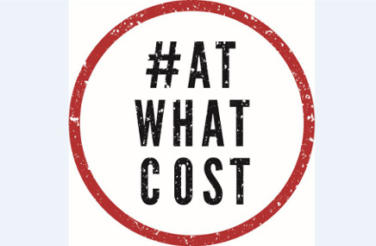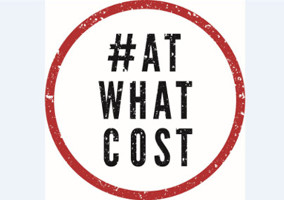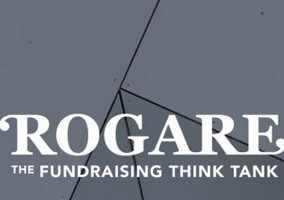Some years ago, I went to the Regent’s Park home of a trustee, a man who I got on really well with and relied upon. Sitting on his sofa, ten minutes into the meeting, I suddenly realised that it was not the meeting I had been expecting. Uncomfortable doesn’t describe it, there was clearly something else going on. How I wished we were sitting at a table, not on the sofa. I felt intimidated, stupid, frightened and humiliated. I managed to make my excuses and escaped.
I never mentioned this to my chief executive officer; not sure why, I’m sure he would have taken it seriously, but I did really worry about the situation with the trustee.
Since then I have thought very carefully before going to any oneto- one meeting, especially in private residences, and I have often chosen to take a colleague or volunteer. Subsequently, I have worked hard to protect fundraising staff – especially, but not only, younger females – and make them aware of the possible risks around donors, other staff and trustees.
Support in place for nurses
I now work at a hospice group with around 50 fundraising staff and 70 retail staff in the department. When I started here, I had a lightbulb moment when I saw how professional nurses operate and how those protocols could be applied to fundraising. One example is the reporting methods and safeguards nurses seek from their employer and through the Royal College of Nursing. Like many fundraisers, nurses are often female and younger, they don’t choose their patients (donors) and they go into private homes.
When nurses and care staff find themselves dealing with threatening, abusive, offensive, dangerous or high-risk patients and families, there are appropriate agreed measures. These include: investigation by management of an issue; moving the employee away from the patient/family immediately to protect her/him; considering supporting the employee to report to the police; SMT discussion on a way forward with a patient/family depending on what was proven. A clear duty of care to employees wins out and there is also a legal risk of personal injury claim if we do nothing.
Measures to protect fundraisers
I realised there was no reason why versions of these measures can’t be applied to fundraisers.
Here are the some of the things we have adapted for our fundraising team, building on the protection in place for our nurses:
- Suzy Lamplugh Trust training on lone working – this is available once or twice a year to all our fundraisers and is of a very high quality.
- All fundraising staff and their teams have a documented lone working risk assessment.
- All teams have a procedure in place to protect lone workers and fundraisers.
- Some of our teams run a buddy system whereby fundraisers check out and in again by text with a named colleague following a meeting or event. There is a documented back-up contact list for each fundraiser if they fail to check in.
- All fundraisers are required to put a lot of detail into their email diary about where they are going, who they are meeting, phone numbers etc.
- Our community, corporate and major gifts fundraisers are registered with a lone working support system (we use Guardian 24). This has an app which means you can log when you are going out and when you expect to be back – and also a back-up network by which a named person is contacted if you don’t return and login to say so.
- These fundraisers also carry an alarm, which when pressed connects immediately to a live call centre which can silently listen in or speak directly to the fundraiser. Our nurses carry the same device and we are introducing a similar system for retail staff in shops.
- Staff do not go into private homes alone or to certain types of events without a risk assessment. This includes door-to-door canvassers of course. Take a colleague or a volunteer with you.
- Any incidents are formally logged on a database called Sentinel – this is the same database where our clinical staff report difficult situations. These incidents are reviewed weekly by the SMT and acted upon. Incidents and complaints are always the first item on the SMT agenda. Sentinel is great as it helps you to spot patterns and recurring incidents and it forces you to list actions and learning.
- We have a policy and clear procedure for managing inappropriate behaviour by service users and this copies over to the fundraising team.
- We also have a policy and procedure for internal whistleblowing and most recently a “freedom to speak up” contact within the charity. The latter has great potential to support and protect fundraising staff and volunteers who are concerned about raising an issue; it’s a good way of making it safe for people to speak up.
Changing the culture in fundraising
There is clearly a difference in power-play with nurses than with fundraisers. Nurses can’t choose their patients, like fundraisers can’t choose their donors, but nurses do have something vital to give to, or withdraw from, patients and families. Fundraisers are in a less powerful situation, always asking, hoping, under pressure with targets and meeting expectations.
Changing the culture in a fundraising organisation is difficult. I think that asking for some of the above measures is probably a good initial route to raising awareness. Start a debate internally about the issues that fundraisers face in their day-to-day work. Talking about the issues with staff in your department is vital and something I plan to do more of in the future.
Another good way to change the culture is by a director or senior person publicly saying: “It’s not OK and here are some measures that we will put in place to support you.” We need strong leadership on this issue. Our CEO for example stepped in a few years ago and personally took over the management of a particular donor.
The Royal College of Nursing provides a service to nurses who can’t get action or support on these issues from their workplace. Sector bodies including the Institute of Fundraising could do worse than to have a look at how nurses are supported and protected in their profession. Our own industry representatives could and should be setting standards of best practice, supporting individual members in very difficult situations, offering a formal service and representation for fundraisers who are not getting the support within their own organisations.
Finally, fundraisers shouldn’t suffer in silence. I have noticed that some fundraisers have to be pushed into using lone worker devices and procedures. At the hospice, we make it a management responsibility to ensure that our systems are used and offer support. It needs to be easier to call people out on assumptions, comments and inappropriate behaviour encountered within charities.
I think a lot of the problem is about how we talk to each other and how we talk about ourselves. It’s very often simple little comments that reinforce this culture.
Stephanie Smith is the director of income generation and marketing at Chestnut Tree House and St Barnabas House hospices in Sussex @StefSmith74
Do you have examples of good practice in your organisation? Policy and research manager at the British Red Cross Ruby Bayley-Pratt is working on a research project to address issues of sexual harassment and other inappropriate behaviour towards fundraising staff and volunteers whilst working with people outside their organisation. She is looking for any examples of what charities, teams and individuals have in place, formal or informal, established policy or work in progress, to protect people. If you can contribute to this research, contact @RubyBayleyPratt or @HelenaWysocki via Twitter or LinkedIn.
Related articles












